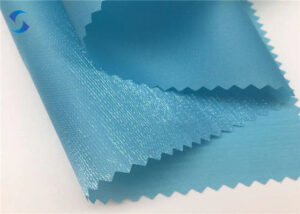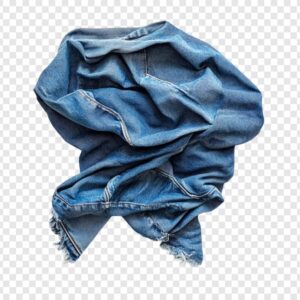Can Wool and Canvas Be Used in the Same Outfit?
Fabric compatibility is a crucial consideration in both fashion design and sewing. Mixing different textiles can influence the aesthetic and functional qualities of a garment. In this article, we explore whether wool and canvas can coexist harmoniously in a single outfit, examining their compatibility and offering practical advice for successful blending.
Compatibility Analysis
Yes, wool and canvas can be used together in the same outfit. These fabrics complement each other well due to their distinct yet compatible characteristics. Wool, known for its softness and warmth, pairs nicely with the sturdiness and texture of canvas.
Key Factors:
- Texture: Wool offers a soft, luxurious feel, while canvas provides a rugged texture. Together, they create a balanced tactile experience.
- Weight: Wool is often lightweight to medium, whereas canvas is heavier. This contrast can add depth to a design.
- Stretch: Wool has some natural elasticity, while canvas is more rigid, requiring careful pattern selection to ensure comfort.
- Care Requirements: Wool typically requires gentle washing, while canvas is more durable. It’s essential to adjust care routines accordingly.
- Durability: Both fabrics are known for their resilience, making them suitable for long-lasting garments.
Fabric Properties Comparison Table
| Property | Wool | Canvas |
|---|---|---|
| Fiber Content | Natural (from sheep) | Natural (cotton or linen) |
| Weight and Thickness | Lightweight to medium | Medium to heavy |
| Breathability | Highly breathable | Moderately breathable |
| Stretch and Elasticity | Moderate | Minimal |
| Wrinkle Resistance | High | Moderate |
| Care Instructions | Hand wash or dry clean | Machine wash, air dry |
| Durability | High | Very high |
Benefits of Mixing These Fabrics
Combining wool and canvas can enhance both the visual and functional aspects of a garment:
- Enhanced Texture and Visual Interest: The soft sheen of wool contrasts beautifully with the matte finish of canvas, creating a visually appealing outfit.
- Improved Comfort and Performance: Wool’s insulating properties combined with canvas’s durability result in comfortable and practical attire.
- Better Drape and Movement: Wool adds fluidity to the stiffness of canvas, improving the garment’s overall drape.
- Cost-Effectiveness: Using canvas for structural elements and wool for accents can be a budget-friendly choice.
- Seasonal Versatility: This combination is suitable for various climates, offering warmth in winter and breathability in summer.
- Design Possibilities: The diverse textures and weights open up a range of design options, from structured jackets to flowing skirts.
Potential Challenges
Mixing wool and canvas does come with some challenges:
- Different Shrinkage Rates: Wool may shrink more than canvas, requiring pre-washing and careful handling.
- Conflicting Care Requirements: Balancing wool’s gentle care with canvas’s durability can be tricky.
- Texture Clash or Pilling: The roughness of canvas might cause wool to pill. Selecting high-quality wool can mitigate this.
- Seam Puckering: The difference in fabric rigidity can lead to puckering, necessitating careful seam finishing.
- Color Bleeding or Fading: Pre-washing and testing for colorfastness can prevent these issues.
Practical solutions include using interfacing to stabilize seams, choosing compatible thread and needle sizes, and conducting pre-wash tests.
Sewing & Styling Tips
When sewing with wool and canvas, consider these tips:
- Sewing Techniques: Use a walking foot to manage fabric layers and prevent shifting.
- Needle and Thread: A universal needle size 80/12 with polyester thread works well.
- Interfacing Needs: Lightweight interfacing can support wool, while heavier interfacing suits canvas.
- Seam Finishing: Overlock or French seams can prevent fraying.
- Pattern Selection: Choose patterns that accommodate both fabrics’ properties, like structured coats or mixed-media dresses.
- Styling Ideas: Pair a wool sweater with a canvas skirt for a chic look, or combine them in home decor projects like cushions or throws.
Care & Maintenance Guide
Proper care extends the life of wool and canvas garments:
- Washing Instructions: Hand wash wool items, while canvas can be machine washed. Use cold water to prevent shrinkage.
- Drying Recommendations: Lay wool flat to dry; canvas can be air-dried.
- Ironing and Steaming: Use a low heat setting for wool and medium for canvas. Steam wool from a distance to avoid damage.
- Stain Removal: Treat stains on wool gently with a wool-safe detergent. Canvas can withstand more vigorous cleaning.
- Long-term Care: Store garments in a cool, dry place to prevent moth damage to wool and mildew on canvas.
FAQ Section
-
Can you wash wool and canvas together?
- It’s best to wash them separately due to different care needs.
-
Will wool shrink more than canvas?
- Yes, wool is more prone to shrinkage, so pre-wash is recommended.
-
What needle size should I use for sewing these fabrics together?
- A universal needle size 80/12 is suitable for both fabrics.
-
Can you mix wool and canvas in one garment?
- Absolutely, they can be combined for a stylish, functional piece.
-
How do you prevent pilling when combining these fabrics?
- Use high-quality wool and avoid excessive friction during wear.
-
Is it okay to mix wool and canvas for upholstery?
- Yes, but ensure the wool is treated for durability.
-
What’s the best way to finish seams with these fabrics?
- Overlock or French seams are effective for preventing fraying.
In conclusion, wool and canvas can indeed be used together in the same outfit, offering a blend of texture, durability, and style. By understanding their properties and addressing potential challenges, you can create unique, high-quality garments that stand the test of time.


Leave a Reply